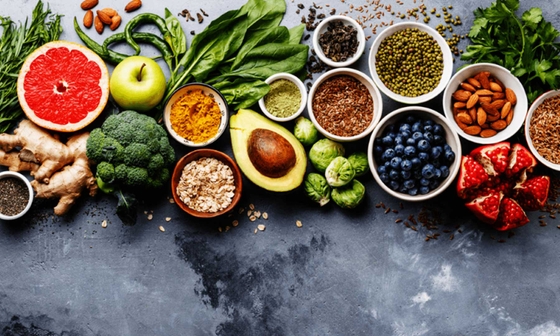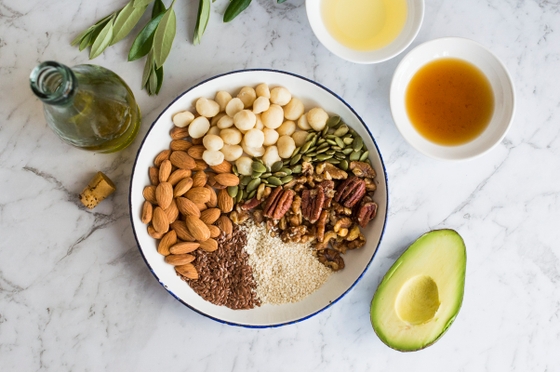
How to make healthier meals at home
Key takeaways
- Cooking at home can be healthier than eating out
- Being organised and planning your meals makes healthy eating easier
- Buying and cooking in batches can save time
- Learn some simple heart-healthy food swaps.
It puts you in control of what goes into your food and body. Making healthy home-cooked food doesn’t have to be hard. Small changes can have a big impact on your heart health. Over time these changes will become easier and fit in with your regular routine.
Plan ahead
You don’t have to spend hours in the kitchen to make a healthy meal. Planning your meals is a simple way to save on time and effort.
Start with a plan
Think about what you could prepare ahead of time. You can cut vegetables the night before and store them in the refrigerator or cook something for use the next night (e.g. pasta sauce).
Involve the whole family
Getting your family involved in meal planning and preparation can help. Ask them to choose their favourite meals from our heart healthy recipes.
Shop with a list
Make sure healthy ingredients are always on hand at home by shopping with a list. Being focused on what you need can also save time in the supermarket. Older kids can help by writing down the ingredients from the recipes they have chosen.
Batch cook
Making a big batch of one dish is more efficient than cooking every single night. Choose a meal that can be packaged separately and frozen. Our freezer-friendly recipes are great options to pull out when time is tight.
Meal plan on a budget
There are plenty of recipes with inexpensive ingredients. You can also find what you need for less, by:
- Buying in-season fruit and vegetables (perhaps try your local farmer’s markets)
- Shopping in bulk
- Looking out for sales.
Build a heart-healthy pantry
Eating at home allows you to make small changes, which together make a big difference. Having these foods in your pantry, fridge, or freezer means you have everything you need for healthy meals at home.
| Pantry | Fridge | Freezer | |
|---|---|---|---|
| Fruit and veg |
|
|
|
| Wholegrains |
|
|
|
| Protein |
|
|
|
| Dairy |
|
|
|
| Fats |
|
|
|
| Flavour |
|
|
Heart healthy food swaps
Try some of our food swaps to find heart-healthy alternatives.
| Swap this | For this |
|---|---|
| Flavoured milk and yoghurt | Unflavoured milk and yoghurt varieties |
| Cream | Ricotta cheese whipped with a little icing sugar |
| Sour cream | Natural Greek yoghurt |
| Grated cheddar | Grated parmesan – the more intense flavour means you can use less |
| Butter as a spread | Avocado, tahini, hummus, nut butter or margarine spreads made from canola, sunflower or olive oils. |
| Butter in baking | Spreads made from canola, sunflower or olive oil |
| Coconut cream/coconut milk | Add a little coconut essence to evaporated milk |
| White grain ingredients like pasta, bread, flour and rice | Wholegrain bread, brown rice, brown pasta, quinoa or wholemeal flour |
| Shortcrust or puff pastry | Filo pastry – brush every 3-4 layers with olive oil, egg white or yoghurt |
| Processed meats | Roasted or grilled lean meats, legumes or eggs |
Healthy cooking methods
The way you cook your food matters. The cooking methods below are the healthiest options:
Steaming
Steaming is one of the easiest ways to cook vegetables. Place a steam basket over a saucepan of boiling water then fill the steam basket with fresh or frozen vegetables. Cover with a lid and let your vegetables steam for a few minutes until tender.
Poaching
Poach delicate foods like eggs, fish or fruit by submerging them into gentle simmering liquid (e.g. water, vegetables and spices). Poaching is not the same as boiling, so be sure to maintain a low heat.
Stir-frying/sautéing
Stir-fry plenty of vegetables in a frying pan on high heat using a small portion of olive, canola, sunflower, soybean or peanut oil. Top it up with a splash of water as you cook.
Roasting
Put lean meats in a baking dish with a rack. Add 1 to 2 cm water and some herbs to the bottom of the pan for extra flavour. Substitute deep-frying with roasting in the oven on a lined tray or grill tray.
Casserole/stewing
This is a convenient method of cooking meats at a low temperature, generally for a longer period of time. Take the time to trim the fat off of the meat before putting it in a casserole dish with some vegetables and legumes.
For more simple meal ideas check out our heart healthy recipes.
You might also be interested in...

Healthy eating to protect your heart
Poor diet is one of the leading risk factors for heart disease in Australia.

Fruit, vegetables and heart health
How to boost your fruit and vegetable intake to help protect your heart.

Fats, oils and heart health
While eating fatty food may sound like a bad thing, some fats can play an essential role in keeping your heart healthy.
Last updated10 March 2020